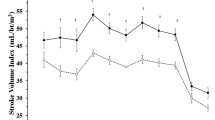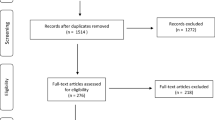Abstract
The influences of mechanical force during physical exercise on blood coagulation and fibrinolysis were investigated and the effects of sports equipment, especially shoes were also examined. As an experimental model, local mechanical vibration was applied to the palm of the hand. General coagulation parameters did not change, but fibrinolytic activity was elevated due to the tissue plasminogen activator (t-PA) released from vascular endothelial cells stimulated by vibration. The influence of mechanical stimulation by repeated side-jumping with bare feet was examined on the sole of the foot. As with t-PA, the von Willbrand Factor antigen (vWF : Ag) derived from vascular endothelial cells also tended to increase, but not as much as when wearing sports shoes. Sports shoes protected the blood vessels of the feet from damage by mechanical force during physical exercise. Changes in fibrinolysic activity and t-PA could be useful for assessing local mechanical stimulation during physical exercise and also as indexes for the development of new sports equipment and its improvement.
Similar content being viewed by others
References
Bergsdorf N, Nilsson T, Wallen P (1983) An enzyme linked immuno sorbent assay for determination of tissue plasminogen activator applied to patients with thromboembolic disease. Thromb Haemost 50:740–744
Cash J (1975) Physiological aspects of fibrinolysis. In: Von Kaulla KN, Davidson JF (eds) Synthetic fibrinolytic thrombolytic agents. Thomas, Springfield, Ill., pp 5–19
Colwell JA (1986) Effects of exercise on platelet function, coagulation, and fibrinolysis. Diabetes Metab Rev 1:501–512
Conover WJ (1980) Practical nonparametric statistics. Wiley, New York
Davidson RJL (1969) March or exertional hemoglobinuria. Semin Hematol 6:150–160
Ernst E, Monshausen C, Matrai A (1985) Blood viscosity — a comparative study on three rotational instructions. Biorheology 22:471–475
Higashi T, Watanabe M, Tyuma I (1986) Effects of local vibration on blood fibrinolytic activity. Blood Vessels 17:151–153
Horvath SM, Borgia JF (1984) Cardiopulmonary gas transport and aging. Am Rev Respir Dis 129:68–71
Kluft C, Brakman P, Veldhuyzen-Stolk EC (1976) Screening of fibrinolytic activity in plasma euglobulin fractions on the fibrin plate. In: Davidson JF, Samama MM, Desnoyers PC (eds) Progress in chemical fibrinolysis and thrombolysis. Raven Press, New York, pp 57–65
Laurell CB (1977) Electroimmunoassay. Scand J Clin Lab Invest 29:21–37
McClelland J, Fletcher F (1981) Preventing atherosclerosis through exercise and control of blood coagulation. J Med Assoc Ga 70:679–682
Nilsson IM, Pandolfi M (1976) Assay of fibrinolytic activity of the vessel wall. In: Davidson JF, Samama MM, Desnoyers PC (eds) Progress in chemical fibrinolysis and thrombolysis. Raven Press, New York, pp 1–13
Ohira Y, Simpson DR, Edgerton VR, Gardner GW, Senewiratne B (1983) Characteristics of blood gas in response to iron treatment and exercise in iron-deficient and anemic subjects. J Nutr Sci Vitaminol (Tokyo) 29:129–139
Previnaire JG, Plaghki L, Col de Beys C, Pardonge E (1990) Fibrinolytic defect and chronic low-back pain. Acta Belg Med Phys 13:229–233
Rocker L, Taenzer M, Drygas WK, Lill H, Heyduck B, Altenkirch HU (1990) Effects of prolonged physical exercise on the fibrinolytic system. Eur J Appl Physiol 60:478–481
Speiser W, Langer W, Pschaick A, Selmayr E, The B, Nowacki PE, Muller-Berghaus G (1988) Increased blood fibrinolytic activity after physical exercise. Thromb Res 51:543–555
Takashima N, Tsuruta H, Higashi T, Watanabe M, Isomoto A, Tyuma I (1987) Effects of mechanical force on blood fibrinolytic activity. Thromb Haemost 58:550
Whitney AK (1981) Balance padding of the athlete. Athletic Training 16:117–119
Author information
Authors and Affiliations
Rights and permissions
About this article
Cite this article
Takashima, N., Higashi, T. Change in fibrinolytic activity as a parameter for assessing local mechanical stimulation during physical exercise. Europ. J. Appl. Physiol. 68, 445–449 (1994). https://doi.org/10.1007/BF00843744
Accepted:
Issue Date:
DOI: https://doi.org/10.1007/BF00843744




